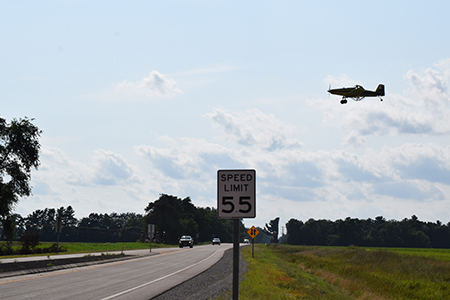Speed Limits |
Speed Limit Types |
Establishing Limits |
Safety and Enforcement |
Frequently Asked Questions | References and Resources |
Contacts
Regulatory speed limits can be either established by state statute or modified through an engineering and traffic investigation.
Statutory Speed Limits
Statutory speed limits are established by state law and are based on the classification (or type) of roadway (e.g., 70 mph on freeways). Statutory speed limits in Wisconsin are governed by
ss. 346.57, which establishes maximum/minimum speed limits for all roadways. These limits are established legislatively and applied throughout Wisconsin on public roadways. Statutory speed limits ensure a limit is in place on all roads.
Modified Speed Limits (Modifications to Statutory Speed Limits)
Modified speed limits are typically established on roadways where the statutory speed limit or existing limit is no longer appropriate due to a change in land use, access, traffic volumes or number of crashes or crash potential along a roadway.
Unless speed limits are set initially by state statutes, all speed limits in Wisconsin must be established through an engineering and traffic investigation, including further modifications that lower or raise speed limits to meet other statutory speed limits.
When modified speed limits are needed, several factors should be reviewed as part of an engineering and traffic investigation:
- Evaluation of roadway environment and characteristics
- Assessment of geographic context
- Review of crash information
- Measurement of prevailing speeds
Depending on the roadway facility and proposed modification, some facilities require WisDOT approval regardless of roadway ownership or authority. Wisconsin
ss. 349.11 defines approval authorities for modifying statutory speed limits. Below are several common examples of modifications:
In this scenario, the municipality may lower the speed limit to 20 mph under the approval authority listed in Wisconsin statutes without WisDOT approval, but an engineering and traffic investigation is required to support the change.
In this scenario, the county may lower the speed limit to either 50 or 45 mph under the approval authority listed in Wisconsin statutes without WisDOT approval, but an engineering and traffic investigation is required to support the change.
In this scenario, the municipality may lower the speed limit to the statutory 25 mph speed limit after completing an engineering and traffic investigation without WisDOT approval. A further reduction to 20 mph would require WisDOT approval.
For State Highways, WisDOT will not complete an engineering and traffic investigation specifically to accommodate specialty vehicles, which includes ATVs/UTVs. For all other vehicles, a municipality must
request that WisDOT complete an engineering and traffic investigation to support these and other speed limit modifications.
For local roadways (e.g., county highways), a municipality must complete an engineering and traffic investigation and follow approval authorities defined in
ss. 349.11.
If WisDOT approval is required and approval is received, the existing speed limit may be lowered to 35 mph or extended depending upon the recommendations of the investigation.
For more information on ATV/UTV routes, please see WisDOT's
page on the topic.
In this scenario, an engineering and traffic investigation would be the roadway design and rely more heavily on the design features and existing context and would not involve taking measurements of the prevailing traffic conditions. Speed limits should not be established based on a single design criterion and should take into consideration how the roadway functions as well as its environmental factors. See the
Safety and Enforcement section. Coordinate with WisDOT to establish an appropriate speed limit.
Modification requests
The public may have questions about a particular speed limit, how it was established and whether it can be changed. It’s important to note that any request to consider modifying a speed limit on the state system must have the support of the local roadway authority, involving local officials in the area. By policy, WisDOT will not act on individual citizen requests or advocacy groups to change speed limits. For additional detail on modification requests or any of the information in this section, see the
Frequently Asked Questions page.